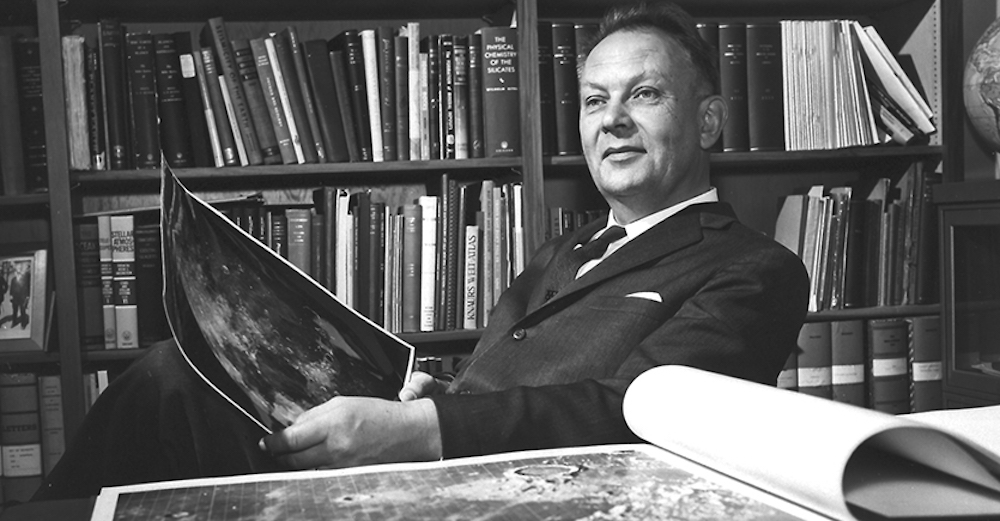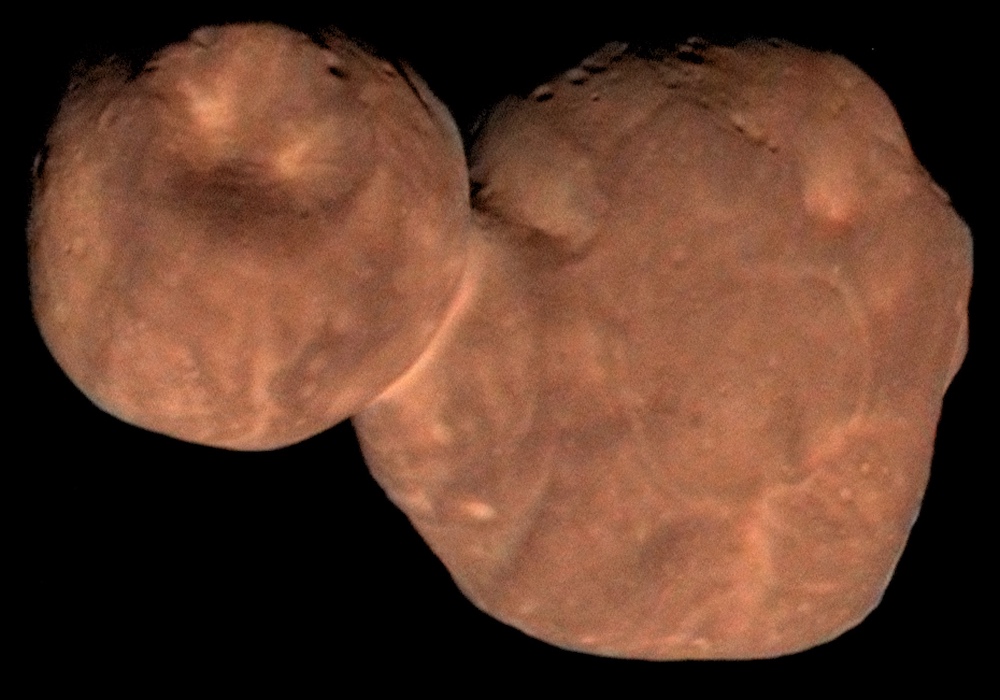Learn about Gerard Kuiper’s pioneering contributions to the field of astronomy, including the discovery of the Kuiper Belt and new celestial objects.
Gerard Kuiper was a Dutch-American astronomer and planetary scientist who made significant contributions to the field of astronomy. He is widely regarded as one of the most influential astronomers of the 20th century. Kuiper was born on December 7, 1905, in Harenkarspel, Netherlands, and died on December 23, 1973, in Mexico City, Mexico.
Kuiper’s contributions to astronomy spanned over four decades, and his work had a significant impact on the field of planetary science. He was involved in the discovery and study of numerous celestial objects, including asteroids, comets, and planets. He also made important contributions to our understanding of the solar system’s formation and evolution.
In this article, we will take a closer look at Gerard Kuiper’s life and work. We will explore his background, his career, and his legacy in the field of astronomy. We will also examine some of his most significant contributions to the study of the solar system.
Table of Contents
- Early Life and Education
- Career
- The Kuiper Belt
- Kuiper’s work on the Moon
- Discovery of Miranda and Nereid
- Planetary Atmospheres
- The Solar System’s Formation and Evolution
- Awards and Honors
- Legacy
- Conclusion
Early Life and Education
Gerard Kuiper was born in the village of Harenkarspel in the Netherlands in 1905. He was the second of four children born to Johannes Kuiper and Tjitske Westra. Kuiper’s father was a tailor, and his mother was a homemaker.
Kuiper showed an early interest in science, and his parents encouraged his curiosity. He attended the Gymnasium Haganum in The Hague, where he excelled in science and mathematics. In 1923, he entered Leiden University, where he studied astronomy, physics, and mathematics.
Kuiper received his Ph.D. in astronomy in 1933, after completing his thesis on the brightness of diffuse nebulae. His dissertation examined the physical properties of nebulae, which are clouds of gas and dust in space.
Career
After earning his Ph.D., Kuiper worked at the Yerkes Observatory in Wisconsin. He later moved to the McDonald Observatory in Texas, where he spent the rest of his career.
At McDonald Observatory, Kuiper made many significant contributions to the study of the solar system. He became interested in the study of the outer solar system and began searching for new celestial objects beyond Neptune. This search led him to propose the existence of a belt of icy bodies beyond Neptune, which is now known as the Kuiper Belt.
The Kuiper Belt
In 1951, Kuiper proposed the existence of a belt of icy bodies beyond Neptune. He suggested that these objects were remnants from the early solar system and could provide insight into the formation and evolution of the solar system. Kuiper’s proposal was initially met with skepticism, but over time, evidence began to accumulate to support the existence of the Kuiper Belt.
In 1992, the first Kuiper Belt object (KBO) was discovered by David Jewitt and Jane Luu. Since then, thousands of KBOs have been discovered, and the Kuiper Belt has become a major area of research in planetary science. Kuiper’s prediction of the Kuiper Belt has become one of his most significant contributions to the field of astronomy.

Gerard Kuiper was a pioneering astronomer whose contributions to the field of astronomy have had a lasting impact on our understanding of the solar system.
Gerard Kuiper’s work on the Moon
Kuiper was also interested in the Moon and conducted several studies of its surface features. In 1949, he led an expedition to Chile to observe a total solar eclipse, during which he took some of the first high-resolution photographs of the Moon’s surface.
Kuiper’s work on the Moon helped to advance our understanding of its geology and surface features. He identified several craters on the Moon and studied their distribution, which led him to propose that the Moon’s surface was shaped by impacts from meteoroids.
Gerard Kuiper Discovers Miranda and Nereid
Kuiper was also involved in the discovery of two moons of Uranus: Miranda and Nereid. In 1948, he led an expedition to the McDonald Observatory to observe Uranus. During this observation, Kuiper noticed irregularities in Uranus’ gravitational field, which suggested the presence of additional moons.
In 1949, Kuiper discovered Miranda, which is the smallest and innermost of Uranus’ five major moons. He also helped to confirm the discovery of Nereid, which is a small and irregularly shaped moon orbiting Neptune.
Planetary Atmospheres
Kuiper made important contributions to our understanding of planetary atmospheres. He studied the atmospheres of several planets, including Venus, Mars, Jupiter, and Saturn, and helped to identify several atmospheric features.
Kuiper discovered the presence of carbon dioxide in the atmosphere of Mars, which had significant implications for the planet’s potential habitability. He also discovered that the atmosphere of Venus is composed mainly of carbon dioxide and is extremely hot, which helped to explain its inhospitable conditions.
The Solar System’s Formation and Evolution
Kuiper’s work on the Kuiper Belt and his studies of planetary atmospheres helped to advance our understanding of the solar system’s formation and evolution. He proposed that the Kuiper Belt was a relic of the early solar system, which contained valuable information about the processes that formed the planets.
Kuiper also suggested that the atmospheres of planets could provide insight into the processes that shaped their formation and evolution. His work on planetary atmospheres helped to identify the importance of greenhouse gases in regulating a planet’s temperature.
Gerard Kuiper Awards and Honors
Kuiper received numerous awards and honors for his contributions to astronomy. In 1959, he was awarded the Gold Medal of the Royal Astronomical Society. He was also elected to the National Academy of Sciences in 1950 and served as the president of the American Astronomical Society from 1959 to 1961.
Gerard Kuiper Legacy
Gerard Kuiper’s contributions to the field of astronomy have had a lasting impact on our understanding of the solar system. His work on the Kuiper Belt and the discovery of new celestial objects beyond Neptune has opened up a new field of study in planetary science and has led to the discovery of thousands of new objects. The Kuiper Belt also provides important insights into the early solar system and the processes that shaped its formation and evolution.
Kuiper’s studies of planetary atmospheres helped to advance our understanding of the conditions necessary for a planet to be habitable. His discovery of the greenhouse effect on Venus was a significant contribution to our understanding of planetary climate and helped to identify the role of greenhouse gases in regulating a planet’s temperature.
Kuiper’s legacy continues to inspire new generations of scientists and astronomers. The Kuiper Belt remains an active area of research, with new discoveries being made all the time. In 2015, NASA’s New Horizons spacecraft made the first close-up observations of Pluto and its moons, providing valuable new insights into the outer solar system and the Kuiper Belt.
Gerard Kuiper was a pioneering astronomer whose contributions to the field of astronomy have had a lasting impact on our understanding of the solar system. His work on the Kuiper Belt and the discovery of new celestial objects beyond Neptune has opened up a new field of study in planetary science and has led to the discovery of thousands of new objects. Kuiper’s legacy continues to inspire new generations of scientists and astronomers, and his work will remain an important part of the history of astronomy for years to come.
References
- “Gerard Kuiper.” Encyclopædia Britannica. Encyclopædia Britannica, Inc., n.d.
- “Gerard Kuiper.” NASA. NASA, n.d.
- “Gerard Kuiper (1905-1973).” The Planetary Society. The Planetary Society, n.d.
- “Kuiper Belt.” NASA. NASA, n.d.
- “Miranda (moon).” Encyclopædia Britannica. Encyclopædia Britannica, Inc., n.d. Web. 01 May 2023.
- “Nereid (moon).” Encyclopædia Britannica. Encyclopædia Britannica, Inc., n.d. Web. 01 May 2023.
- “Planetary Atmospheres.” Encyclopædia Britannica. Encyclopædia Britannica, Inc., n.d. Web. 01 May 2023.
- “The Kuiper Belt and Oort Cloud.” European Space Agency. European Space Agency, n.d. Web. 01 May 2023.
- Google Analytics for Beginners: Guide to Mastering Analytics - July 28, 2023
- National SEO for Lawyers: Drive Nationwide Traffic for Your Firm - July 28, 2023
- The Power of Local SEO for Lawyers: Build Your Practice - July 28, 2023


